Food on the Rails
The Food on the Go Series
as part of the Rowman & Littlefield Studies in Food and Gastronomy
General Editor: Ken Albala, Professor of History, University of the Pacific ( )
Rowman & Littlefield Executive Editor: Suzanne Staszak-Silva
( )
The volumes in the Food on the Go series explore the fascinating ways people eat while getting from one place to another and the adaptations they make in terms of food choices, cutlery and even manners. Whether it be crossing the Atlantic in grand style on a luxury steamship, wedged into an airplane seat with a tiny tray, or driving in your car with a Big Mac in hand and soda in the cup holder, food has adapted in remarkable ways to accommodate our peripatetic habits. Eating on the go may be elegant or fast, but it differs significantly from everyday eating and these books explain why in various cultures across the globe and through history. This is the first series to systematically examine how and why mobility influences our eating habits, for better and worse.
Food on the Rails: The Golden Era of Railroad Dining , by Jeri Quinzio (2014)
Food on the Rails
The Golden Era of Railroad Dining
Jeri Quinzio
ROWMAN & LITTLEFIELD
Lanham Boulder New York London
Published by Rowman & Littlefield
A wholly owned subsidiary of The Rowman & Littlefield Publishing Group, Inc.
4501 Forbes Boulevard, Suite 200, Lanham, Maryland 20706
www.rowman.com
16 Carlisle Street, London W1D 3BT, United Kingdom
Copyright 2014 by Rowman & Littlefield
All rights reserved . No part of this book may be reproduced in any form or by any electronic or mechanical means, including information storage and retrieval systems, without written permission from the publisher, except by a reviewer who may quote passages in a review.
British Library Cataloguing in Publication Information Available
Library of Congress Cataloging-in-Publication Data
Quinzio, Jeri.
Food on the rails : the golden era of railroad dining / Jeri Quinzio.
pages cm
Includes bibliographical references and index.
ISBN 978-1-4422-2732-3 (cloth) ISBN 978-1-4422-2733-0 (electronic)
1. RailroadsDining car serviceHistory. 2. Roadside restaurantsHistory.
I. Title.
TF668.Q56 2014
385'.22dc23 2014010035
 The paper used in this publication meets the minimum requirements of American National Standard for Information SciencesPermanence of Paper for Printed Library Materials, ANSI/NISO Z39.48-1992.
The paper used in this publication meets the minimum requirements of American National Standard for Information SciencesPermanence of Paper for Printed Library Materials, ANSI/NISO Z39.48-1992.
Printed in the United States of America
To my mother,
Mary Mahoney Quinzio,
who always saw possibilities.
Food on the Go,
Series Foreword
How familiar is the lament? No one sits down to eat any more! People just grab something on the street or at the drive through. Thats not a proper meal, its just noshing on the way from one place to another. Food on the move is nothing new. There has always been street food and fast food. People have always eaten in transit. Our tendency to dismiss such meals as quick and convenient but never of any real gastronomic distinction does injustice to the wide variety of foods available to people traveling, and sometimes these meals could be quite elegant indeed. Think of the great caravans trekking across the steppes of Western Asia, parking their camels and setting up tents for a sumptuous feast of dried fruits, nuts, flatbreads, and freshly roasted kebabs. Or think of the great age of early air travel when airlines had their own specially designed dishware and served elegant, if seat-tray-sized, meals prepared by trained chefs. Meals served on trains in the nineteenth century were among the most celebrated of their day and of course luxury cruises pride themselves on fine dining as an indispensable feature of the entire experience. Food truck fare, offered to pedestrians, has now become the cutting edge in hip cuisine.
Traveling food need not be grand though. Sometimes it merely supplies sustenancethe hikers trail mix or high protein pemmican to sustain the intrepid hunter on the great plains. It can also be pretty rough if we think of the war time C rations or hard tack and rum given to sailors in the colonial era. It seems as if some modes of transport have their own repertoire of foods, without which the trip would not be complete. Whats a road trip without chips and junk food? Is there anyone who doesnt miss the little packs of salty peanuts on domestic flights? Traveling food also poses its own unique set of challenges, both for food preparation and consumption. Imagine stoking a fire on a wooden ship! Or flipping an omelet while the train rumbles violently over the tracks. Handheld food, perhaps the way of the future, is the quintessential traveling format, but so too are special Styrofoam containers and sporks, not to mention the leather bota, aluminum canteen, or plastic water bottle. Traveling food has its own etiquette as well, looser than the dining table, but interestingly quite private, perhaps intentionally in considering the public setting.
When I first thought of this series, I dont think I had ever thought through how many foods are specially designed for travel, or how complex and very culturally bound food eaten on trains, planes, cars, bikes, horseback can be. I will never forget a long train ride I took from Rome to the Tyrolean Alps. A young family sat across from me and they were well stocked with goods. Out came a salami, a loaf of bread, a hunk of cheese, a bottle of wine. They were making a mess, gesticulating wildly, chattering in Italian. It all looked delicious, and they savored every morsel. By the time we approached the German-speaking region, they had neatened themselves up, tidied the area, switched languages, and every trace of their Italian repast was gone, and would have been completely unseemly, I think, that far north. That is, people do have explicit gastronomic traditions for travel that are as bound up with nationhood, class, gender, and self as any other eating habit. So it is about time we thought of these kinds of meals as a separate genre, and this series I hope will fill the gap in our understanding of why we eat what we do on the move.
Ken Albala
University of the Pacific
Acknowledgments
No one writes a book alone.
Friends and acquaintances clip relevant news items, recommend books, and tell their stories about the subject at hand. Their ideas often lead to new lines of inquiry, correct misconceptions, and make the work better than it otherwise would have been. Its likely that many of them dont know theyve contributed to the book. They may have made a passing remark and then forgotten it. But that remark may have led to new avenues of thought and made a major difference to the writer.
Others play a more direct role, providing photographs and recipes, reading rough drafts, correcting errors, suggesting changes. Even when we disagree, the criticism is helpful and, ultimately, appreciated.
The godmother of this book is Kyri Claflin, who recommended the project to me. Kyris wisdom, encouragement, and support have been a source of strength for me for years. I owe her special thanks.
Series editor Ken Albalas boundless enthusiasm for food, history, and life makes working with him a joy.
Br. Thomas Ryans extensive knowledge of trains kept me on track and helped me avoid many a derailment. I am in his debt and in Pat Kellys for introducing us.
Thanks to Roz Cummins for remembering her mothers Pullman toy and her friend Charlotte Holt for photographing it for me. Others who generously provided photographs include Paul Smith, company archivist for Thomas Cook UK & Ireland; Carine Corcia, of Le Train Bleu in Paris; Phoebe Janzen, Florence Historical Society and Harvey House Museum; Joann Schwendemann, Dover Books; Anne M. Baker and Shannon Mawhiney, Missouri State University; Stacey Bollinger, Strasburg Rail Road; Amanda Caskey, Venice Simplon Orient-Express; and Kyri Claflin.



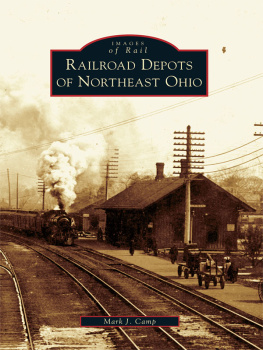
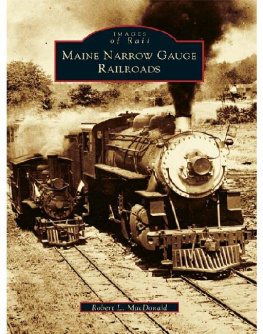
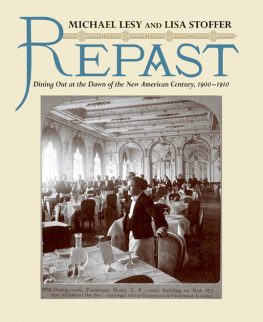
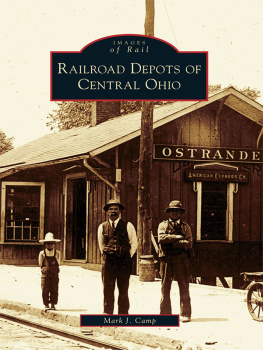
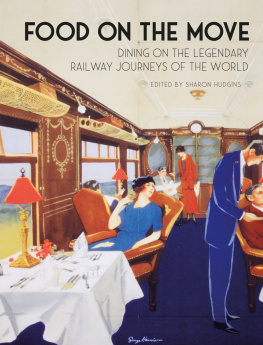

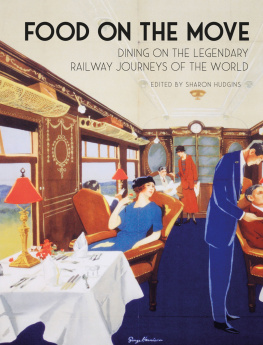
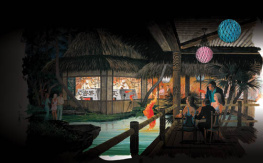
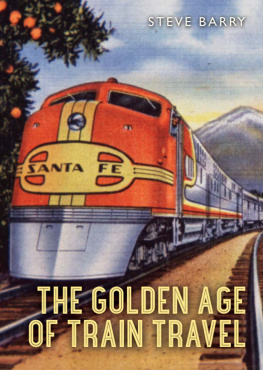
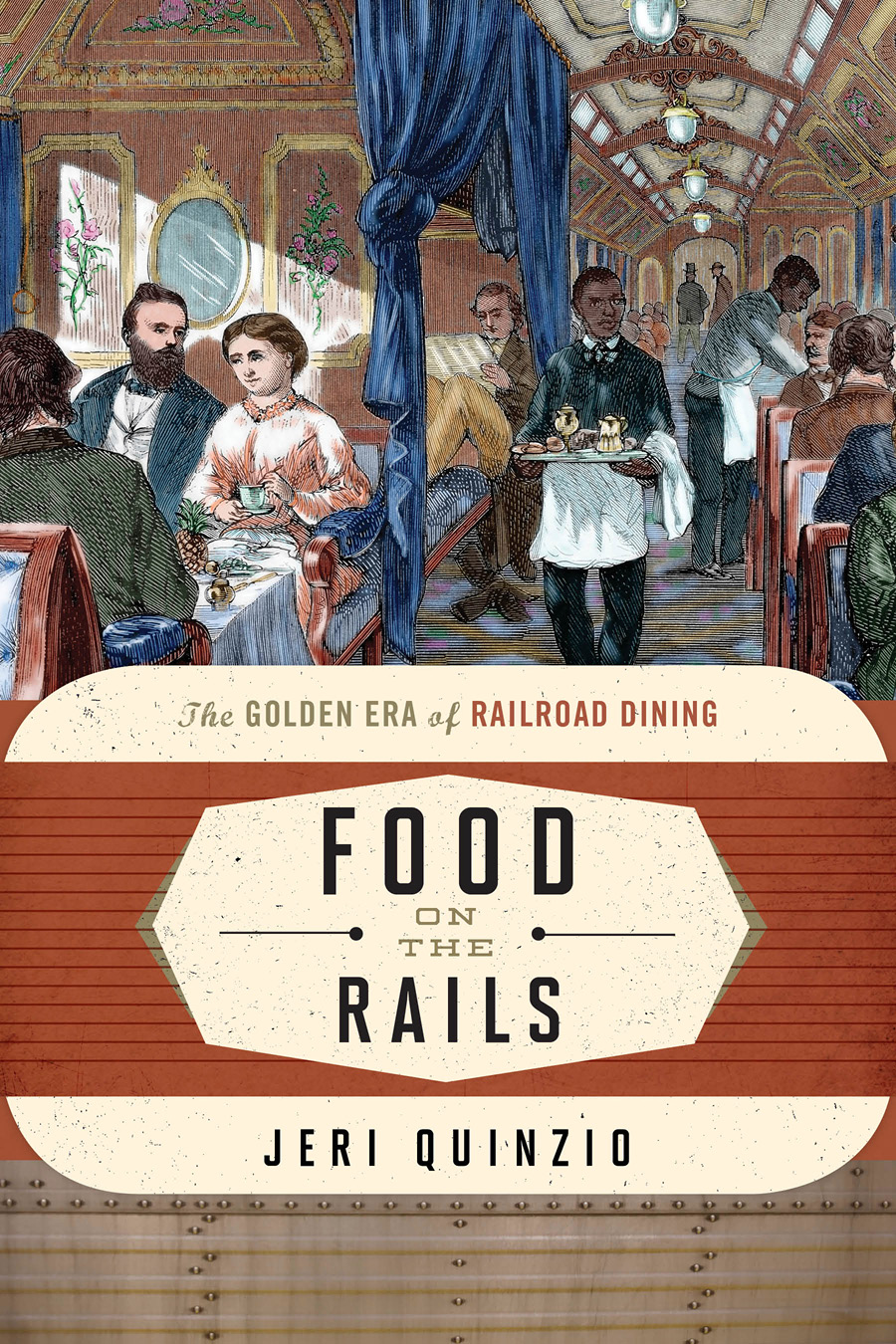
 The paper used in this publication meets the minimum requirements of American National Standard for Information SciencesPermanence of Paper for Printed Library Materials, ANSI/NISO Z39.48-1992.
The paper used in this publication meets the minimum requirements of American National Standard for Information SciencesPermanence of Paper for Printed Library Materials, ANSI/NISO Z39.48-1992.